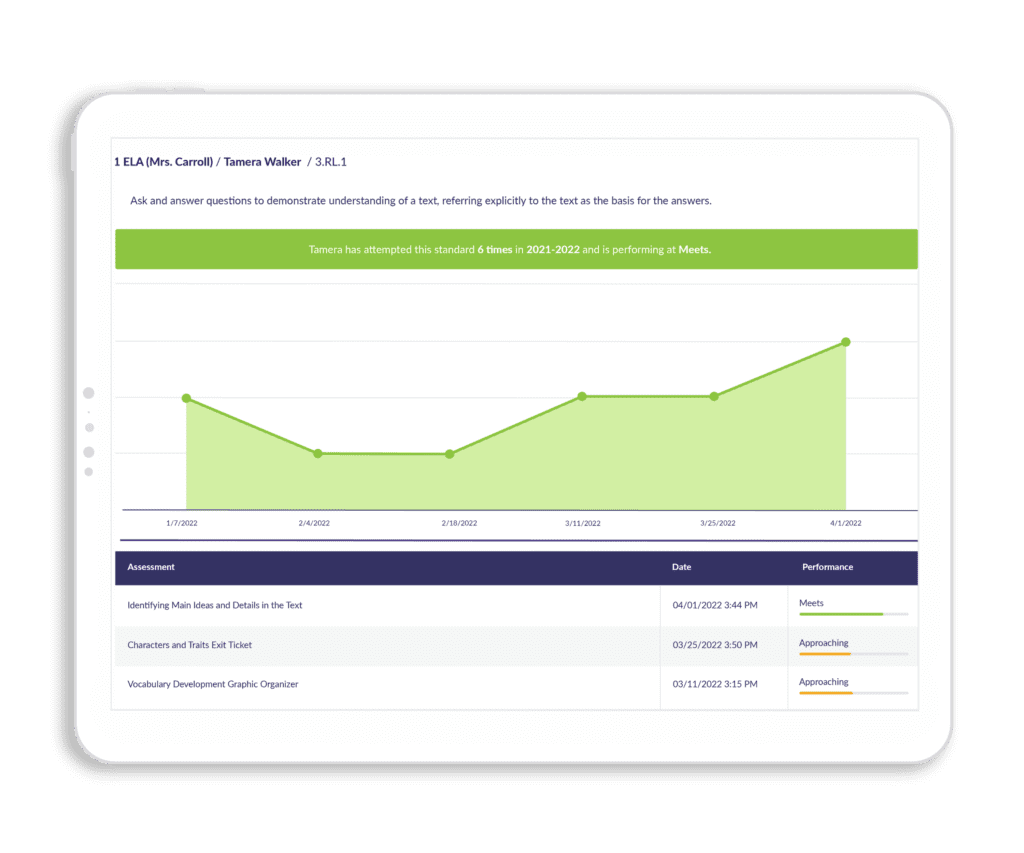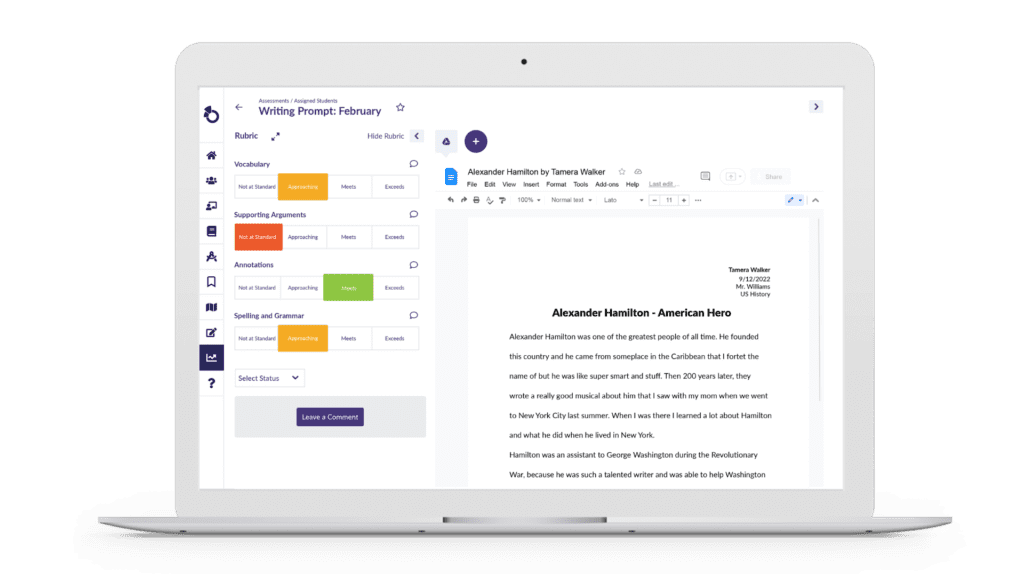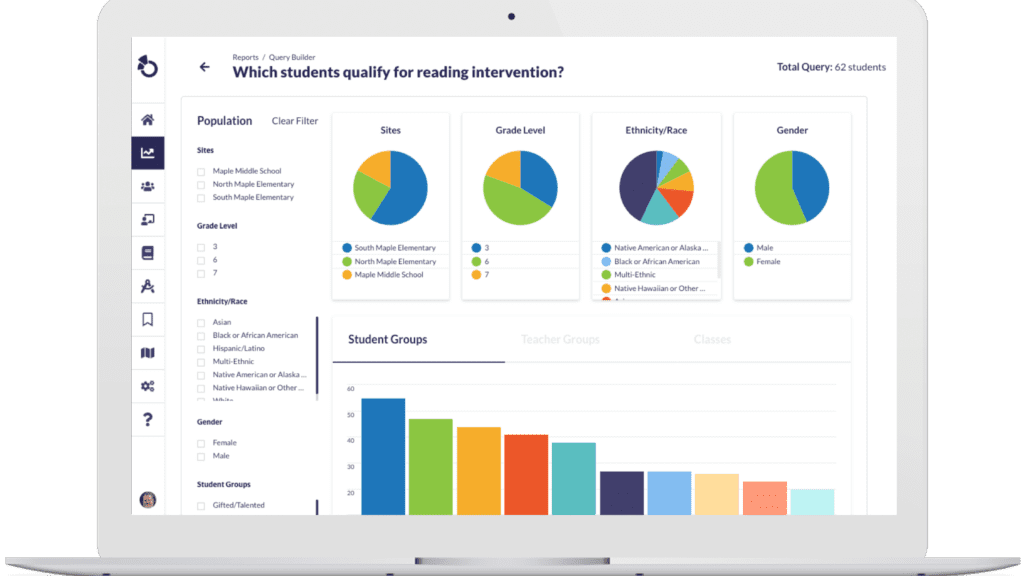Everything You Need to Know to Successfully Transition to Standards-Based Grading
By: Kendell Hunter
In this Tech & Learning webinar hosted by Otus, educators shared everything you need to know to successfully transition your school to standards-based grading.
This webinar was led by Dr. Kecia Ray and featured Sara Andrus, District Administrator with Sharon J11 Community Schools in Wisconsin, and Lisa Westman an author, speaker, and consultant who works with school districts to implement standards-based grading. The webinar also featured input from Kendell Hunter, product marketing manager for Otus, and a former classroom educator.
Four Key Takeaways from the Webinar
1. Standards-based grading supports meaningful conversations with a common language
In a traditional grading system, teachers often average a student’s scores on tests and assignments. While educators have used this grading method for centuries, current research shows that a standards-based grading model provides a more accurate assessment of a student’s progress and achievement. In her work with schools internationally, Lisa Westman shared that the “key value of standards-based grading is that it creates a common language for how teachers will assess student learning.” Westman encourages teachers to think about standards-based grading as a starting point for developing common communication methods so that they can provide better feedback. She asks “What does a grade tell you? What does an “A” tell you about a child?” – and points out that if we provide better feedback we can better meet students where they are and unpack the learning that needs to be done.
"We had so many convos about students, their growth, what they can do, where we need to focus instruction. Convos become much more intentional than 'should i give this assignment 10 points or 20?' It eliminated some of that subjectivity that isn't helpful. It’s changed how we do everything.”
Sara Andrus
Sara Andrus, district administrator with Sharon J11 Community Schools in Wisconsin, describes a similar shift in her K-8 school district. Andrus’ district made the transition to standards-based grading several years ago when they noticed a decline in standardized state test scores that she attributes to educators not being calibrated on what their grade-level expectations were for students. Andrus worked with her staff to redefine the rigor of learning expectations using standards. These “calibration conversations” as she calls them enabled the team to look at what students should be able to do at that point in time and determine how they can fill gaps if students are not yet meeting expectations. Because of these conversations, their shift to standards-based grading was smooth and had buy-in from stakeholders.
She shares, “The first year we made the switch, it went really well. There were lots of questions and thoughtful convos with kids, parents, staff. This looks very different, but what is it telling me? We had so many convos about students, their growth, what they can do, where we need to focus instruction. Convos become much more intentional than 'should i give this assignment 10 points or 20?' It eliminated some of that subjectivity that isn't helpful. It’s changed how we do everything.”
2. Clear communication of student progress increases stakeholder buy-in to new grading practices

Many school leaders have experienced push-back from the community on the value of and rationale for a transition to standards-based grading. Westman believes that for many, including teachers and families, this hesitation comes down to an identity component that exists within grading. There are whole populations of teachers who are really skilled at creating curriculum, content, and assessments – and that is part of who they are in their practice.
She shares, “There can be this feeling of 'Do I have to change everything I’ve ever done?' And you don't have to change everything. We’re just going to look at it through this lens and see how we can make it work better for you and your students. Most importantly, we’re offering and providing appropriately rigorous instruction for our students.”
Westman believes that there is critical context school leaders need to provide to educators who are feeling hesitant: that standards-based grading does not change everything. Instead, educators are going to look at grading through a new lens to see how it can work better for teachers and students while offering and providing appropriately rigorous instruction for students.
“There can be this feeling of 'Do I have to change everything I’ve ever done?' And you don't have to change everything. We’re just going to look at it through this lens and see how we can make it work better for you and your students."
Lisa Westman
In addition to this, the entire school community needs the right tools to support an initiative like standards-based grading. Westman emphasizes this sentiment by sharing that “...grading should best communicate where our students are at and teachers need tools to understand this as well.” Former educator and product marketing manager, Kendell Hunter, shared how edtech tools, including platforms like Otus, can and should help to make the communication of student performance easier to understand so educators can shift the focus to what’s next and what the data tells them. Otus does this by providing every stakeholder from students to family, teachers and administrators with a unique account where they can log in and view progress in a way that is meaningful to their role and work. Tools like Otus can also help to facilitate meaningful conversations between students and their families.
Historically, families have relied on report cards to understand where their child is at – but with the right edtech tool, families no longer need to wait for a paper-based mailing at defined intervals to track progress and know a child’s strengths or areas of need.
Westman compares a report card to a bank statement and points out that we can go far beyond this to allow for real-time analysis. She shares, “Bank statements that are sent via mail are oftentimes already obsolete by the time they arrive. It’s about retraining. Parents should be continuously checking their student's progress just like you should a bank account.” With Otus, Hunter highlights how Otus enables students and families to view real-time data and progress right in the platform. They can then engage in dialogue around a child’s strengths or areas of opportunity so they no longer need to wonder where students are and growth conversations can become more natural.
“Bank statements that are sent via mail are oftentimes already obsolete by the time they arrive. It’s about retraining. Parents should be continuously checking their student's progress just like you should a bank account.”
Lisa Westman
From an administrator standpoint, Andrus also highlights how important family education about grading is to the community. She shares that “Our families didn't grow up with SBG, so it's completely foreign. Taking time in the beginning to explain to kids and parents, here's the scale, the terminology, and what those things mean. And then the big hang-up of 'where’s the zero?'”
Andrus goes on to explain that her teachers are now sharing with families what "no evidence" means so that they understand the difference between a zero and no evidence. She also emphasized the importance of helping the community understand the standards-based grading language they are using. For example, if a family member expects a child to start at “exceeding expectations,” she helps them to understand that students aren’t expected to start at the highest level. The goal is to see growth.
3. Changes in practice that lead to greater student outcomes and engagement
When a school community is considering a shift in grading methods, it’s critical to evaluate common practices in the community to determine if they are a fit for the model they want to implement. One common practice shift that is associated with standards-based grading is allowing students to redo work. While there are many schools of thought around implementation and guidance around how to thoughtfully implement redos so that the policy is not taken for granted, redos allow educators to modify instruction and provide an additional opportunity for the child to demonstrate their learning.
For Andrus’ K-8 district, the shift to standards-based grading completely changed their redo policy. She shares, “Students can redo anything, anytime. You don't have to show me what you know in just this one way. We can look at multiple ways of displaying your knowledge as long as it fits the rubric that has been created. You have power in what that might look like.” The ability to redo work is what Andrus shares she loves most about standards-based grading. She highlights that “it gives the student some power in the conversation and to show how much they know.”
“Students can redo anything, anytime. You don't have to show me what you know in just this one way. It gives the student some power in the conversation and to show how much they know.”
sara andrus
In addition to redos, standards-based grading has enabled many educators to separate and provide feedback on behavior, instead of grouping it with an overall academic score. It’s a common myth that standards-based grading diminishes the ability for teachers to document behavior and hold students accountable. SBG simply calls for districts to implement the use of behavior characteristics and for educators to document student behavior in a separate location. According to Westman, “If a student's behavior is not what we as teachers want it to be like, if we can remove ourselves and not take it as a personal affront; behavior serves a purpose; is the student trying to gain attention, avoid something, etc.? That’s also data that we can use for instruction. It's important to report on that in a diplomatic, intentional way.”

Hunter describes how Otus makes the communication of behaviors, often referred to as student skills, easy and clear to report progress on. Schools across the country who use Otus build rubrics to assess students on academic skills but also student skills such as citizenship, peer cooperation, work completion, and more. Hunter says this “gives educators more evidence to have a meaningful conversation.” Educators can use the data to clearly speak to both academic progress and progress on learning skills.
4. Is standards-based grading more work and is it here to stay?
Andrus believes that “SBG isn't more work if you set it up right. It kind of ends up grading itself with a lot of the tools out there that teachers have to use. It provides clarity and far fewer arguments about why did I get this score or you didn't grade me fairly - we aren't having those arguments anymore. It isn’t more work, it’s just more intentional work.”
“SBG isn't more work if you set it up right. It provides clarity and far fewer arguments about 'why did i get this score or you didn't grade me fairly' - we aren't having those arguments anymore. It isn’t more work, it’s just more intentional work.”
Sara Andrus
Westman echos this sentiment and shares that while standards-based grading might not be called "standards-based grading" in 10 or 15 years, the concept isn’t going anywhere. "What i do believe is here to stay is the idea of knowing the learning target, what students are supposed to meet, what meeting that looks like, and tracking the data somehow. The grading piece and the standards – that could change. I can go on any app and see data on what I've bought, how many times I've bought it – if education doesn't keep up with that, we aren't relevant with everything else in the world. I do not think identifying what students need to learn and collecting data and reporting it is going anywhere. If anything, I'm excited to see how we perfect it moving forward!”
Ready to learn more about how Otus can support standards-based grading in your school community? Get in touch with our team!
Related Resources
Request a demo!
See exactly how Otus can help your school accelerate student growth and improve student outcomes – all while saving educators time.




